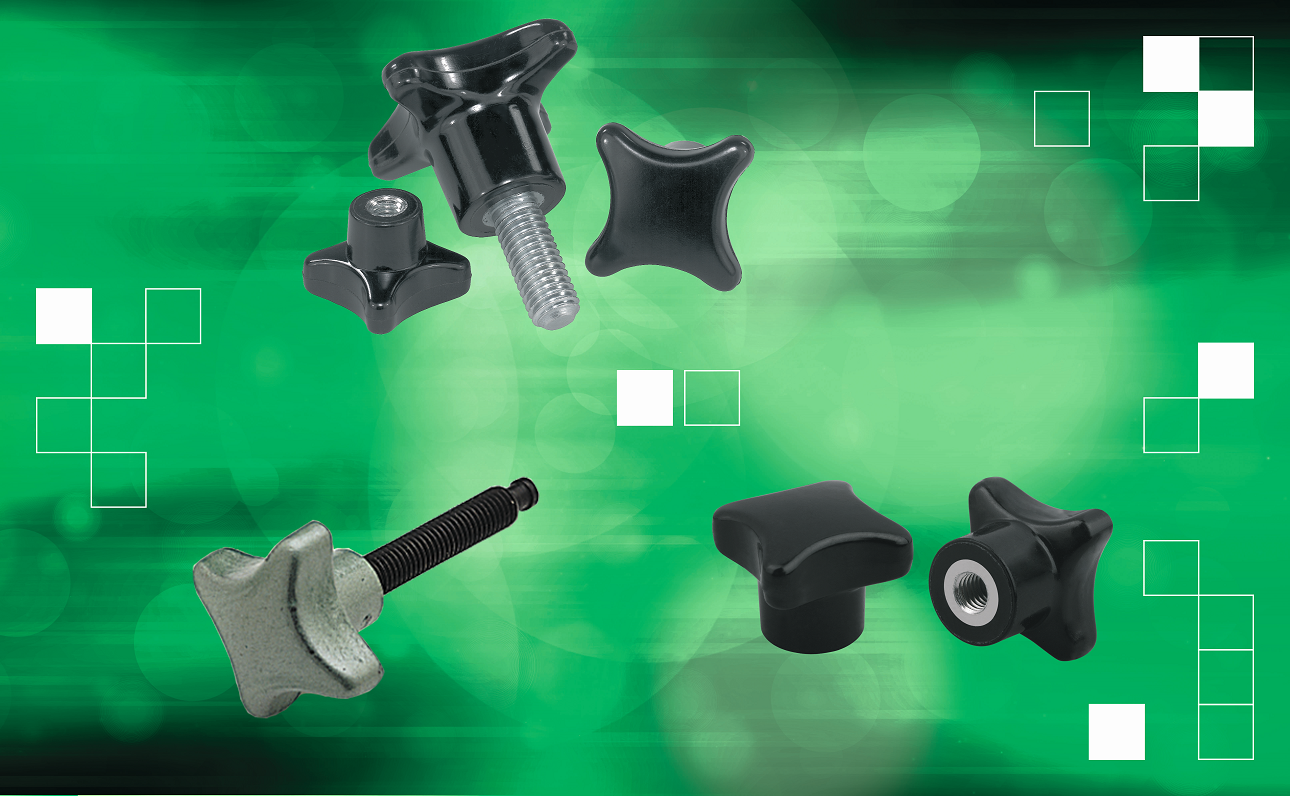Health and safety in manufacturing and engineering is the sum of all parts, no matter how big or small. Even the most unnoticeable components, like grips, handles and knobs, must be carefully selected and assessed, explains Marcus Schneck, CEO of standard components specialists norelem.
When thinking about health and safety in factories or around machinery, it is probable that the first thoughts which come to mind will be around heavy moving parts. The risks of crushing, trapping, cutting, lifting heavy loads, are all of course dangerous and deadly hazards which should be adequately risk assessed.
Indeed, when you look at the statistics, it’s not hard to see why. According to UK’s Health and Safety Executive (HSE), each year there was an average of more than 3,100 reports of major injuries in the last five years.
However, it’s not always the obvious dangers that always cause the damage. Minor injuries like strains and sprains also account for many of the reported injuries in the workplace. Injuries like repetitive strain injury are caused from longer term mis-use of equipment, and a gradual build-up of damage to muscles, tendons and nerves. These can be from poor grips and knobs on tools, and injuries can even rise from the most innocuous of bumps from handles that stick out from machinery.
Ultimately, these injuries lead to lost productivity, efficiency and impacts on profitability. There are measures that can prevent these injuries from occurring, and there are a wide variety of standard components that will suit users and applications.
The Grip of Life
Grips can come in a variety of shapes and sizes, and are used every day within the manufacturing industry or on the factory floor. From manual clamping star grips to palm grips designed for clamp covers, there is a wide range of grips that can ensure quick and secure use within the workplace.
However, before settling for the first grip you may come across, it is important to consider the application in which the grip will be used in. For example, with palm grips, they have triangular grooves which allow twisting and turning to be an easy task whether that’s a tightening or loosening action. This makes them ideal for installing in hard to access areas behind large machinery or components, so users can easily operate the grip when needed.
Another factor to consider is whether the grips are being used where electrostatic discharge (ESD) is possible, common with electrical and electronic environments. In this case, choose grips that have an antistatic property. These offer more protection against the occurrence of electrostatic spark discharges, preventing the potential ignition of gases and dusts which could lead to explosions in enclosed spaces. Of course, this protects the people who could be in the vicinity, but also the machinery too.
Handling with Care
Whether it’s pulling or pushing, handles are essential when working in a busy manufacturing or engineering environment. Handles can range from pull handles which are designed to provide easy grip when pulling machinery or furniture around, through to recessed handles which are designed to embed into the surface they are attached to.
Available in a variety of designs and materials, there are pull handles to suit any need. Commonly, they are made from thermoplastic making them resistant to high temperatures and enables them to stay in use from 150°C – 160°C degrees. As well as being thermoplastic pull handles, the base of the handle is incorporated with a fastening hole to accept the head of a socket or a hexagon head bolt for easy application. They can also be supplied with a soft inner face, designed to give users maximum comfort when carrying and gripping. These handles are available straight or right-angled.
It’s easy to bypass the thinking around the safety element of handles in the workplace and whether they could cause potential harm when passing by. This is where the recessed handle excels. Ideally suited for walls and solid panels. This handle doesn’t stick out or obstruct access, minimising the chance of bumping into it, and gives a smooth finish and easy grip when lifting or pulling.
Hit the Panic Button
Mushroom knobs are arguably the most common knob seen in the engineering industry, as they are secure, quick and easy to use. With high ergonomic functionality the mushroom knob provides a push down function allowing an easy grip and twist action.
Secure handling in a high-risk environment such as a factory floor is essential to avoid any slips or mishandling. A common scenario is where users can struggle to grasp the knob, due to oil and lubricant in the environment. Making sure there are no slips when operating machinery is in action is crucial, and in this case choosing knobs with a ‘knurled’ effect means there is less chance of this happening.
As well as ease of use, users often need to be able to differentiate and identify knobs quickly, to stop machinery. Here, colour is important. norelem offers a range of knobs in colours such as traffic red to highlight danger, bright yellow, and light grey, and they can be supplied with gap designs too.
It doesn’t necessarily have to be mushroom knobs though. Spherical, tapered, conical and ball knobs are all standard components available in standardised sizes, so no matter the design or requirement, there will be a knob that will suit.
Think Small
In order to reduce injury and accidents within the workplace, ensuring these smaller parts are used and maintained correctly is essential.
When working around machinery or in a factory setting all parts and components must be assessed to follow the correct criteria and standards, especially where ESD is possible.
Using the correct product can allow easier functionality and reduced stress on the body part using that component, protecting productivity, protecting machinery, and ultimately, protecting users.
For more about norelem’s range of grips, handles and knobs, please visit





